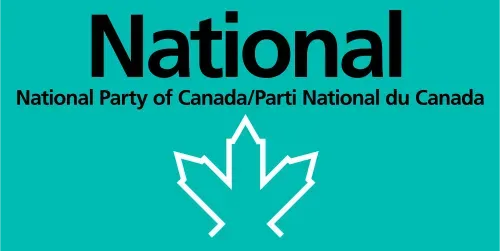Why I Left Canada — And Why I Still Believe It Can Lead

In 1993, I was 18 years old, full of idealism, and running for Parliament in Niagara Falls under the banner of the National Party of Canada. We were a small, fiery movement led by Mel Hurtig—a publisher, patriot, and man deeply worried that Canada was selling itself off piece by piece.
The campaign was quixotic. We didn’t win a seat, and the party imploded within a few years. But its message stayed with me: that Canada if it didn’t chart a course of sovereign economic development, would one day wake up to find that nothing essential was truly Canadian anymore.

That warning feels less like a political thesis three decades later and more like a reality.
Bermuda and the Freedom to Build
In 1999, I left Canada—not because I stopped believing in its potential—but because I could no longer build within its constraints. I moved to Bermuda, a place with no income tax, capital gains tax, or systemic penalty for creating value.
That shift changed everything. In Canada, the system is designed to tax you at every stage: when you earn, invest, and win. In Bermuda, I could build without being bled. The capital I created didn’t sit idle—it was reinvested—into ideas, teams, and momentum.
This isn’t about escaping responsibility. It’s about recognizing what conditions allow innovation to flourish. I wasn’t alone. A pattern was forming—Canadian founders leaving to grow, not because they wanted to, but because they had to.
The U.S.: Where Capital Meets Confidence
Eventually, my ventures needed to raise money—institutional capital.
The natural next step was the United States, not only because of its market size but also because of its regulatory architecture, which is designed to empower entrepreneurs, not entangle them.
The SEC’s Regulation D framework gives founders a toolkit to raise capital privately, legally, and efficiently:
• Rule 506(b) allows companies to raise from accredited investors with whom they already have a relationship—no public promotion, just a clean exemption from registration.
• Rule 506(c), created under the JOBS Act in 2012, takes it further: It allows founders to publicly promote their raise if they verify that investors are accredited.
This rule built AngelList, Republic, WeFunder, and dozens of modern capital networks. It enabled the democratization of private markets, which is why raising a $1M round in the U.S. is a rite of passage. In Canada, it’s a multi-year grind.
Canada’s Invisible Capital Market
In theory, Canada has a similar structure under National Instrument 45-106, which governs exempt market securities. But in practice, the system is broken.
There is no equivalent to 506(c). Canadian founders cannot publicly promote investment offerings on social media, newsletters, or websites. Any such solicitation is presumed illegal unless you already have a “substantive” relationship with the investor. But what qualifies as “substantive” is vague, uneven, and inconsistently enforced across provinces.
This isn’t just regulatory caution—it’s a deliberate throttle. The result is a capital market that’s not just shallow—it’s invisible. Most Canadians don’t know they can invest in startups, and most startups never know where to find the capital.
So what happens? Founders look south. Or worse—they never start.
How I Moved South
To enter the U.S. market, I followed the L-1 intercompany transfer visa path—a legal path under NAFTA that allowed Canadian entrepreneurs to move to the U.S. to manage American subsidiaries of their foreign companies. At the time, you could have the visa adjudicated at a land border crossing. It was fast, efficient, and designed for business builders.
I didn’t move because I was unpatriotic. I moved because the incentives were clear: build where you’re wanted.
What Canada Must Do Now
The global order is shifting. U.S. trade dominance is retreating. Supply chains are localizing. Capital is seeking sovereignty. This isn’t a crisis—it’s a 100-year opportunity for Canada to lead if we boldly retool our system for the builders who haven’t left yet (and maybe to encourage active repatriation!).
Here’s where to start:
• Lifetime tax exemption on income and capital gains for value creation reinvested into Canadian companies—especially in the earliest stages.
• A 506(c)-style exemption under NI 45-106 to allow verified public solicitation of capital from accredited investors.
• A national fundraising passport to eliminate the patchwork of provincial regulations that make capital formation inefficient and fractured.
• A Canadian L-1 equivalent that lets Canadian companies import global talent and expand internationally without forcing permanent expatriation.
These aren’t radical ideas. They’re pragmatic updates rooted in the reality of how modern capital moves.
The Echo of Mel Hurtig
I still remember Mel Hurtig’s speeches on the campaign trail. He believed that Canada should own its economy, warned about dependency, and feared that Canadian decisions would one day be made elsewhere.
Too few listened. And now the price is apparent.
But it’s not too late.
To stop the brain drain, Canada needs to reverse the capital drain. If Canada hopes to keep its founders and innovators, the next government needs to stop taxing them like trust-fund heirs. If Canada wants to lead, it has to stop asking permission.
This isn’t just about me. It’s about all the entrepreneurs who left. And all the ones who never started because the system was stacked against them.
Canada must stop exporting ambition.
It must start exporting leadership.
I am a Canadian entrepreneur, investor, and former federal candidate for the National Party of Canada. I co-founded Next Wave Partners, a venture studio and capital formation advisory firm. Now based in North Carolina, I write frequently about the venture capital industry, startup financing models, and founder-led innovation. Over the past two decades, I have built and advised ventures across Bermuda, Grand Cayman, the United States, and Canada.
If you like my work, hit subscribe! :)
No spam, no sharing to third party. Only you and me.

Member discussion